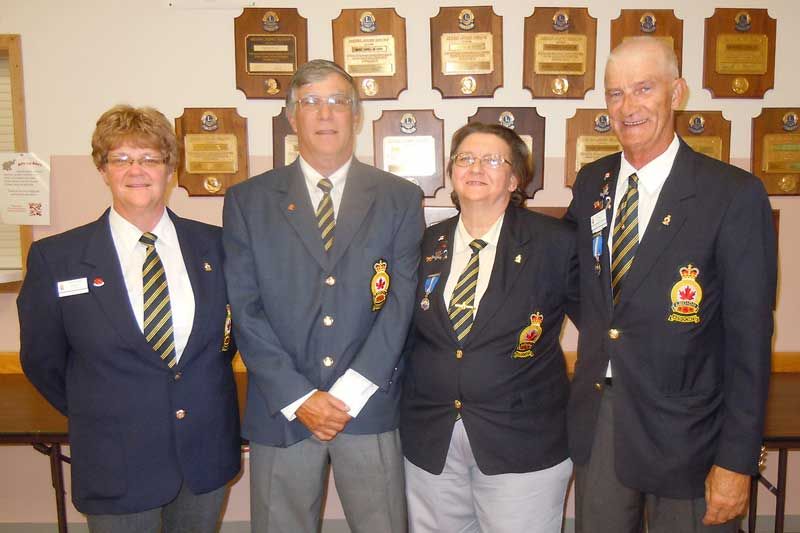Julie Druker | Aug 19, 2015
Close to 50 guests gathered at the Northbrook's Jimmie Clarke Legion Branch # 328 to celebrate the 90-year anniversary of the Canadian Legion. Padre Harry Adringa opened up the ceremony with a prayer that was followed by a welcome by Legion president, Mike Powley Jr.
Past president Cecil Hawley then introduced vice president and poppy chairman, Steve Michaud, and vice president, Bill March.
Comrade and veteran Doug Wood spoke about veterans, who he said represent all kinds of family relations, all ethnic groups, and that are made up of rich and poor. Some veterans may be “strong, broken, sick, remembered, and some forgotten”. He called veterans “peace keepers, peace makers and warriors', and “simple, ordinary people who were honoured to wear Canada on their shoulders”.
Past zone commander Dan Bush made two certificate presentations, the first to past president Cecil Hawley, who served for 18 years as president at Branch 328, and the second to Cecily Matacheskie, who sold tickets at the branch for years before moving to Belleville.
The band Big Clear Sound performed for guests, after which lunch was served.
I have included below a history of the Canadian Legion that was part of the anniversary celebrations at the special celebrations in Northbrook.
The Royal Canadian Legion was formed in 1926 following the unity of various World War 1 veteran organizations and is Canada's largest veteran support and community service organization with over 300,00 members in more than 1400 branches across the country. The Legion advocates on behalf of veterans, including serving military and RCMP members and their families and provides essential supports to communities across Canada. Prior to WW1, the Armed Forces in Canada were represented by regimental associations, scattered units of various types with one dominion organization that was called the Army and Navy Veterans Association of Canada. Membership in these groups was limited to former military members and the majority of these groups only existed in urban areas where military armories were located. Overwhelmed by the sheer volume of ill and injured veterans following WW1, in which 61,000 Canadians were killed, 172,000 were wounded and another 130,000 were medically discharged as result of their military service, governments needed advice on how best to deal with the overwhelming number of veterans issues and needs. From 1917 to 1925 several veterans' organizations sprang up in Canada but had no unified voice. In November 1925, 12 veterans' organizations met in Winnipeg for a special “Unity Conference” and it was from this conference that the Canadian Legion was born. By July 1926 the Canadian Legion became self supporting.
More Stories
- No Winner Yet in Catch The Ace But Fundraising Target Met
- South Frontenac Food Bank Opens Second Location in Battersea
- Sharbot Lake Pentecostal Church Anniversary - 1925-2025
- Frontenac Holistic Health Fair - September 20 At Storrington Centre
- Odd Year For Real Estate - But Sales Are Steady Year Over Year
- 193rd Kingston Fall Fair
- Kim Phuc - the Napalm Girl - To Visit Flinton In November
- South Frontenac Council - September 2
- Sticker Shock - EV Charging Station To Cost North Frontenac Township
- 30th Anniversary Verona Car Show

